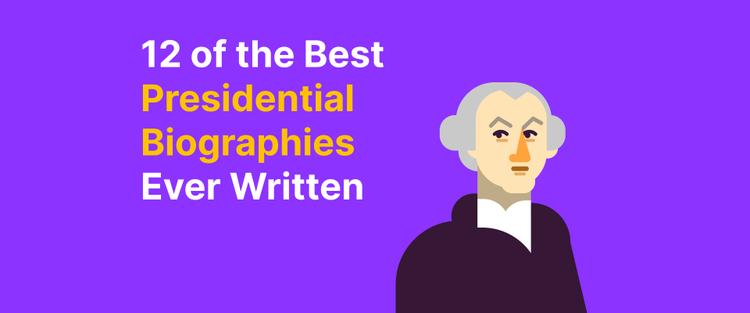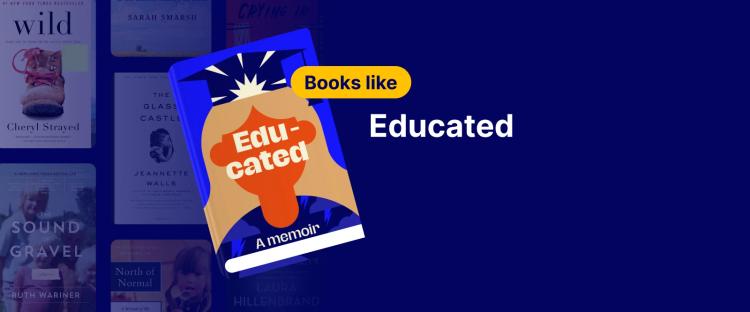You've got this story idea in your head, but every time you sit down to write it, nothing happens. The cursor blinks. The page stays empty. You type something, hate it, delete it, start over. Starting a book is brutal when you have no idea what actually hooks a reader.
But here's the thing: you don't need to figure this out from scratch. The best writers have already explained what works in those crucial first pages. This guide uses their advice to help you overcome the blank page nightmare.
We're pulling from:
William Strunk Jr. and E.B. White's 'The Elements of Style'
Stephen King's 'On Writing: A Memoir of the Craft'
Elizabeth Gilbert's 'Big Magic: Creative Living Beyond Fear'
Steven Pressfield's 'The War of Art: Break Through the Blocks and Win Your Inner Creative Battles'
Want the writing advice from these books without reading all of them? Headway gives you 15-minute summaries, so you get what matters while you're actually working on your manuscript. Learn from successful authors without spending weeks reading about writing instead of doing it.
📘 Download Headway and steal the pros' tricks while writing your own book!
Quick answer: Four ways to start a book
Forget perfection and just write. Stop fixing that first sentence over and over — just get words on the page. You can make it good later when you're not staring at a blank screen.
Hook them with your opening line. Your first sentence has to grab people immediately. Drop them into something interesting right away, not three paragraphs of background nobody cares about yet.
Use an outlining method that works for you. The Snowflake method lets you start small and build out gradually. Or jump around and write whatever scene you're feeling — plenty of writers do it that way and organize the mess later.
Start with a moment that changes everything. Jump right into the thing that kicks off your whole story. Whatever forces your character to actually do something — that's where you start, not before.
What stops writers from starting their first book?
In the face of the unfamiliar, fear is a natural reaction. Long ago, fear helped us survive by warning us of potential harm. Since creativity involves facing the unknown, it often triggers fear. We may fear success, failure, excessive attention, harsh criticism, inability to recreate past achievements, or unfulfilled dreams.
Yet, we must accept writer's block as an inevitable part of the creative process and learn to confront these fears head-on. Avoiding fear means shying away from creativity itself. Instead, Gilbert suggests "going on a journey" with fear, acknowledging it, giving it a voice, and listening to what it has to say.
"The universe buries strange jewels deep within us all, and then stands back to see if we can find them." — Elizabeth Gilbert, 'Big Magic'
Why perfectionism kills your writing progress
Perfectionism is often perceived as a positive trait, implying a desire to do a job flawlessly. But this is just another name for fear. We fear being perceived as incompetent or having our work judged, so we strive to perfect it.
You may not have everything you need right now, but taking a "leap of faith" can help you discover many hidden talents and skills within yourself.
"Done is better than good." ― Elizabeth Gilbert, 'Big Magic'

In 'Big Magic: Creative Living Beyond Fear,' Gilbert reveals her view of the creative process. Through stories from her life and journey, from working in a coffee shop to achieving world recognition as a writer, she shares that she was supported by a promise she made to herself: never stop writing, no matter the circumstances. Wherever she was and whatever she was doing, she devoted at least a little time to what she loved. This commitment allowed new ideas to appear on paper.
"There is little or no detectable bullshit in that book. (Of course, it's short; let's keep our heads.) I'll tell you right now that every aspiring writer should read The Elements of Style." — Stephen King, 'On Writing'
How to make creativity part of your daily life
We often perceive creativity as an attribute of those who have devoted their careers to art. But, as Elizabeth Gilbert writes, making your life more creative doesn't require quitting your job or changing your profession. It's enough to understand what moves and excites you, what gives you sincere joy, and what makes life more inspired and rich.
"A creative life is an amplified life. It's a bigger life, a happier life, an expanded life, and a hell of a lot more interesting life. Living in this manner—continually and stubbornly bringing forth the jewels that are hidden within you—is a fine art, in and of itself." ― Elizabeth Gilbert, 'Big Magic'
Any thought, even the most ridiculous, should be recorded. Record, sketch, jot your ideas, or dictate them as an audio track. The main thing is not to let them disappear—and, of course, not to lose where they were recorded.
Return to these ideas after a while and examine them from all sides. Something valuable can emerge from this process. Freewriting or brainstorming can help reveal your potential.
Where do bestselling authors find their ideas?
Watch the world around you. It often presents stories and plots you just have to catch. Keep a small notebook or smartphone handy to record thoughts, observations, and ideas that have come to you. If you consistently write down everything that happens around you, you'll soon have material for several books.
"Creativity is a path for the brave, but it is not a path for the fearless. It is a path for those who are willing to take risks and keep going, even when things are uncertain." — Elizabeth Gilbert, 'Big Magic'
📘 Get Headway for writing advice you can actually use today.

How do you write an opening sentence that hooks readers?
"The hardest part of writing is not the writing itself, but sitting down to write. What keeps us from sitting down is Resistance." — Steven Pressfield, 'The War of Art'
Like anything else, the writing process is a muscle that can be built into a routine. At its core, it's simply a way to share thoughts.
What makes a great book idea worth writing?
Many people don't realize that the difficulty usually lies not in the writing itself but in the thinking and story ideas behind it. Writing is a reliable tool that clarifies and conveys your thoughts. In writing, you force yourself to think critically and train the parts of your brain that are usually on autopilot.
By trying to articulate something in writing, you're performing an exercise in transforming unclear ideas into more understandable concepts, both externally and internally.
"Start before you're ready. If you don't know the beginning, just start. The ideas will come as you work, as you commit to the process. The most important thing is to get out of your own way and let the creative energy flow." — Steven Pressfield, 'The War of Art'
Everything starts with an idea or even just the germ of an idea—a seed from which it will sprout if nurtured conscientiously, correctly, and with love. It can be anything: a first scene, a line, a sentence, an image, a character, a feeling, a general atmosphere, perhaps the germ of a plot.
In his essay 'Why I Write?' George Orwell stated that writing is necessary so the reader experiences aesthetic pleasure, emotion, joy, and admiration from the scene described.
"The best books... are those that tell you what you know already." — George Orwell
How to write clearly without losing your voice
In 'The Elements of Style,' William Strunk Jr. emphasized the importance of energetic writing with the advice:
"Vigorous writing is concise. A sentence should contain no unnecessary words, a paragraph no unnecessary sentences, for the same reason that a drawing should have no unnecessary lines and a machine no unnecessary parts."
How a powerful opening sentence can hook your readers
An opening sentence or line is at the beginning of the first paragraph. An opening line can be part of or all of an opening scene. The first line should hook readers and draw them into the story. It should say: listen. Come here. You want to know about this.
"Your job is to write a sentence as good as you can, and then a paragraph, and then a page. It is a job of long-haul, of persistence. But it starts with the opening sentence." — Stephen King, 'On Writing'
How can a writer make an invitation so enticing that it's hard to refuse?
There's a straightforward concept — create intrigue in the story from the first page if it is fiction, or connect with usefulness and specific solutions if it is nonfiction. If readers feel they need to learn something, they'll likely read to the end.

"The reader's first impression of your work is created by the first sentence. Make it count." — William Strunk Jr. and E.B. White, 'The Elements of Style'
We've all heard the advice from creative writing teachers: Start your book in media res — in the middle of a dramatic or confusing situation — and you'll immediately capture the reader's interest. It's called a hook; to some extent, the principle is correct.
Avoid boring the reader by dragging it out. Go straight to the point — you will have to write less, but the great story will hold the reader's attention!
"Any writer worth his or her salt knows that the first draft of anything is shit. But I have also learned that while it's true that the first draft is often crap, it's also true that if you can get through it, you can get through the rewrites. The trick is not to let the first draft get you down. Or to drag it out, risking boredom for the reader." — Stephen King, 'On Writing'
Build your first chapter: Outlining methods that work
Many writers know from experience that you can edit a newly written draft until you lose your pulse, but still not be satisfied with the result. Put down the finished text, let it sit, and give your brain a rest. After a couple of weeks, return to the text and examine it with a fresh eye — the next revision will likely be much better.
"Write with the door closed, rewrite with the door open." — Stephen King, 'On Writing'
Many authors write non-linearly: they start from the middle, from the end, and jump from thought to thought. This method allows you to maintain a degree of interest and work efficiency. Write down everything you have in your thoughts, and only then will you arrange the sections properly, framed by the template, introduction, and conclusion.
Snowflake method
The "Snowflake method" involves creating a literary work (novel or short story) by moving step-by-step from simple to complex. It allows you to maintain your creative impulse and avoid getting confused in the plot of your book.

Before starting work on a book using the "snowflake method," write down all your ideas and valuable thoughts. These can include descriptions of the characters' appearance and mental state, as well as landscapes, interiors, and other relevant details. All this will come in handy when compiling the novel's structure.
"With the Snowflake Method, you begin by focusing on the core of your story and gradually build up to a complete outline, which helps you see the entire structure before you start writing." — Randy Ingermanson, 'How to Write a Novel Using the Snowflake Method'
The structure itself is built from 10 steps:
Shortest annotation
Basis of composition
Characters
Novel synopsis
Character synopses
Internal logic
Details
Scenes
Dialogues and problems
Make the book easy to read
Avoid clichés, fixed expressions, and boring official language. Don't pile complex words into intricately twisted constructions. Invent your own images and metaphors to captivate the reader with the freshness of your style.
Write in simple sentences to make the book easy to read. Develop and refine your recognizable style, incorporating rhythm, language, and visual elements.
"Make the paragraph the unit of composition: one paragraph to each topic." — William Strunk Jr., 'The Elements Of Style'
If you have conceived a work of art, a book plan, or a backstory will help you progress more easily in writing and create a complete text. For example, use a "mind map" or a timeline of episodes.
If you still find it challenging to plan the entire novel, write down the ideas of the main episodes on cards, and later try to assemble the rest of the book into a single whole.
📘 Try Headway to master creative writing without reading for weeks.
Create memorable characters: Bring your story to life
Stephen King also suggests giving characters both good and bad sides, as well as fears and experiences. It will make them more alive and relatable to the reader, allowing for empathy and self-association.
"Characters are not always good or bad, they are sometimes both. I have always believed that the most interesting people are those who have a little bit of good and bad in them." — Stephen King, 'On Writing'
King advises that when writing a scene that causes unique pain, sadness, or happiness, immerse yourself in these feelings. Remember what in your life caused them, and channel that into your writing.
A good writer puts emotions on paper. Whatever you do, don't take this lightly. Emotions are a powerful writing tool, and it's up to you how you use them to make the reader fall in love with your text.
Start with your protagonist's turning point
"The situation comes first. The characters—always flat and unfeatured, to begin with—come next. Once these things are fixed in my mind, I begin to narrate." — Stephen King, 'On Writing'

A protagonist's life-changing event can be their "inciting incident" — a moment that thrusts them into the conflict they must resolve or overcome by the end of the story.
It's also beneficial to describe the key features and characteristics of the main characters. This method will allow you to create vivid characters and showcase their personalities better.
Another good idea is to write short biographies for all key characters. It doesn't matter if these biographies aren't mentioned in the text later. The main thing is that understanding the hero's past gives the author a basis for creating a complete image. Narration is often in the third person, but sometimes, an author can be the first-person narrator.
Character development: Develop realistic, relatable characters
Your characters in novel writing should have realistic qualities, such as distinct smells, movements, and specific speech patterns. Where can you get ideas for this? Observe the people around you.
Character development is necessary throughout the story. The essence of many (if not most) written stories is to observe how a person accepts the challenge of fate, almost breaks from its force, but overcomes it and changes.
"The best stories always end up being about the people rather than the event, which is to say character-driven." — Stephen King, 'On Writing'
Give yourself room for flexibility and maneuvers. Many authors claim that at some point, their characters seem to come to life and take control of the story themselves, and it's worth listening to them. Don't be afraid when things get out of control — characters and lines can start moving as they want. This is a form of world-building.
Practice daily writing: Exercises to build your craft
1. "The Toolbox" exercise: Stephen King advises writers to keep a "toolbox" of writing skills, including vocabulary, grammar, and style. A practical exercise is to read and write regularly.
By reading the books of the classics and the most successful works of modern authors, you can notice and borrow interesting literary techniques and enrich your language. Learn from the best and gain experience from them, but do not plagiarize.
"If you want to be a writer, you must do two things above all others: read a lot and write a lot." — Stephen King, 'On Writing'
2. Daily creative practice: Elizabeth Gilbert stresses the importance of maintaining a regular creative practice. An essential exercise is to participate in a daily creative activity, even if it's only for a short period. This could involve writing, drawing, or any other creative pursuit to keep the creative juices flowing.

"Art is a crushing chore and a wonderful privilege." — Elizabeth Gilbert, 'Big Magic'
3. Write through the resistance: Choose a project you've been avoiding due to resistance. Write for 15 minutes daily on this project, no matter how you feel. This exercise helps you push through resistance and build momentum.
"Someone once asked Somerset Maugham if he wrote on a schedule or only when struck by inspiration. 'I write only when inspiration strikes,' he replied. 'Fortunately it strikes every morning at nine o'clock sharp.'" — Steven Pressfield, 'The War of Art'
Finish strong: From first draft to published book
Starting is only half the battle; it's finishing that truly counts!
Build momentum and finish your manuscript
In 'Big Magic' (also a New York Times bestseller) by Elizabeth Gilbert, the 4th chapter, 'Permission,' reinforces and clarifies what was said earlier and emphasizes that creative self-improvement has no defined boundaries.
A notable statement draws attention: creativity does not selfishly require complete attention from the artist, nor does it necessitate their sacrifice in the form of quitting work and absolute dedication. Regarding the "eternal" question: "Is creativity a vocation or a profession?" Gilbert leans toward the first option.
"You do not need permission from anyone else to live a creative life. You only need permission from yourself." — Elizabeth Gilbert, 'Big Magic'
So, the worst thing for an artist is to lose hope and give up. Persistence will sooner or later be rewarded—often at the most unexpected moment.
"I realized that almost every writer of fiction or poetry who has ever published a line has been accused by someone of wasting his or her God-given talent. If you write (or paint or dance or sculpt or sing, I suppose), someone will try to make you feel lousy about it, that's all." — Stephen King, 'On Writing'
Navigate publishing: Self-publish vs. traditional routes
Keep in mind that writing a first book is only half the battle. It's also important to publish it and find your audience. Unfortunately, publishing houses don't appreciate books by novice writers; in rare exceptions, they offer a ridiculous fee. Try self-publishing or writing online on a literary platform.
"I believe the first draft of a book — even a long one — should take no more than three months…" — Stephen King, 'On Writing'
Alpha readers, who read and comment on individual chapters or early drafts, can provide invaluable feedback during a book's development.

"Alpha readers are the first to see your manuscript. They are often trusted friends or colleagues who provide initial feedback. Their reactions can be critical in shaping the revisions that make your manuscript ready for a broader audience." — Arielle Eckstut and David Henry Sterry, 'The Essential Guide to Getting Your Book Published'
Once you have a finished manuscript, edited and commented on by beta readers, having a literary agent at this stage would be nice, especially if this is your first time publishing a book. This approach will provide professional and competent support at all stages of writing, publishing, and promoting the book.
Ready to start your own story with Headway?
Starting a book, whether it's a novel, short story, or your first attempt at creative writing, comes down to pushing past fear, crafting openings that grab readers, figuring out how to outline, and creating characters that feel real. The advice in bestsellers like 'On Writing,' 'Big Magic,' and 'The War of Art' gives you actual moves you can use today.
Don't feel like reading four full books right now? Headway breaks down the big creative writing and copywriting bestsellers into 15-minute summaries. You get what works from books on writing tips, short story structure, and all that — without spending weeks reading instead of actually writing your manuscript.
Also, you might find these articles helpful: 'Bookworm's Guide to Reading 50 Books a Year' and 'How to Remember What You Read: 12 Proven Strategies.'
📘 Download Headway and steal what the bestsellers know while you're working on your own book!
FAQs about how to start a book
How to start writing a book for beginners?
Stop overthinking and write something. Pick whatever scene or idea won't leave your head alone and get it on paper. Doesn't matter if it's bad or if you haven't planned the whole thing. You can organize later. Most people never start because they're waiting to feel ready, but that feeling never comes. Just open a document and type words. You'll learn by doing it, not by thinking about it.
How to write a killer first line?
Throw readers into something that makes them go "huh?" or "oh, what's happening?" Don't ease into it with background or setup. Be specific — generic statements like "it was a cold night" are ineffective. Your opening line needs to create a question their brain wants answered. That's it. If they read the second sentence, you won't win.
What genre sells the most books?
Romance absolutely dominates. Thrillers and mysteries also do really well, followed by fantasy and sci-fi. Self-help and business books move decent numbers. But look, if you're only picking a genre because it sells, you're gonna hate your life halfway through writing it. Write the stuff that gets you excited, or you'll never finish anyway.
What does 10 9 8 7 6 5 4 3 2 1 mean in a book?
It indicates which printing of the book is currently in use. The first printing has all ten numbers. Every time they print more copies, they drop the lowest number. So "10 9 8 7 6" means it's on the sixth printing. Publishers use it to track print runs without explicitly stating it. Kind of a weird system, but that's publishing for you.
What are the 3 C's of writing?
Clarity, conciseness, coherence. Clarity means saying things so people get what you mean. Conciseness is not using fifty words when ten will do. Coherence means your ideas connect and flow instead of bouncing around randomly. Get decent at these three and your writing improves fast, doesn't matter what you're writing — novels, blog posts, whatever.







